Sapa Travel Guide
Best Things to Do in Sapa
What Things to Do and Best Places to Visit in Sapa Town? Is this your first trip to Sapa, Vietnam? Not to worry, you’re in good hands! Here’s a list of best activities to do and must see places in Sapa to furnish your itinerary. Pack your bags and get ready to immerse yourselves in a riveting and an enjoyable adventure with the list of things not to miss in Sapa.
1. Trek and visit fascinating tribal villages: Tribal trekking is commonplace in Sapa wherein visitors are guided through the many villages to immerse in authentic cultural experiences, enjoy local cuisine and surround themselves with the beautiful folds of rice terraces. If you are keen on traversing the cultures and traditions of the tribal groups, this experience will provide a hands-on and unmediated experience, contrary to merely visiting landmarks and points of interests.
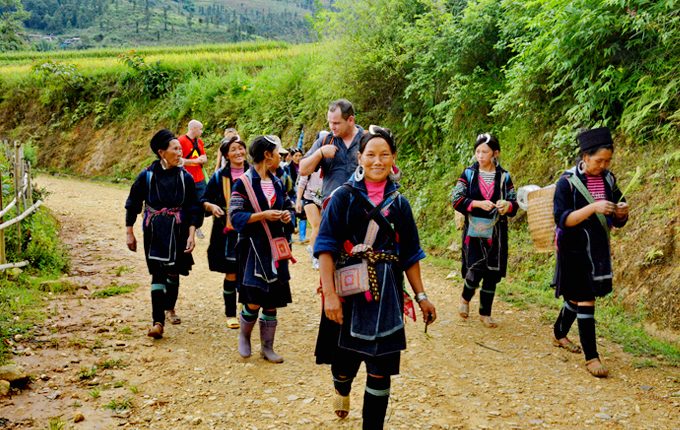
To engage in a more fulfilling immersion, you can trek the villages in the day and spend the night at a local home, then continue your journey the very next day! This homestay experience appeals not only to travellers who are keen in the tribal cultures but also those who wish to avoid the throngs of tourists at popular sights.
2. Marvel at the beautiful and romantic Love Waterfall: Places are made of a thousand stories – the legend behind the Love Waterfall is one that should not be missed. The ancient folktale tells a story of a forbidden love between a fairy and a boy who frequented the waterfall to play his flute. It is widely believed that the waterfall was a bathing place for fairies. In the aftermath of ferreting out the love affair, the fairy’s parents forbade her from visiting the waterfall. The story ends with the fairy metamorphosing into a bird to live with the boy. The symbolism of the waterfall as “Love” was born thereafter.
The Love Waterfall located in San Sa Ho Commune is a must-visit – the beauty of the lustrous streams will captivate your senses. The 70,000 VND (~S$4) entrance fee is definitely a steal!
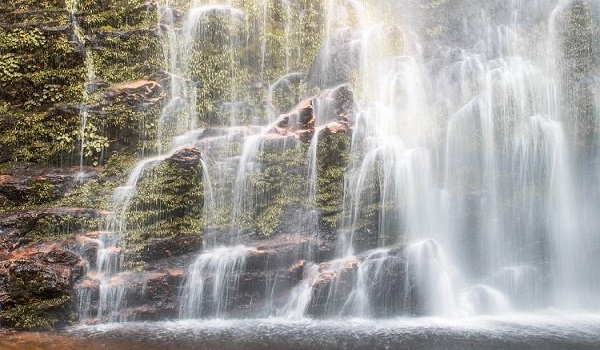
Tip: A ride from Sapa Town which will take approximately 30 minutes, contrary to hiring a motorbike which will take approximately an hour.
3. Trekking to Discover Breathtaking Silver Waterfall: If you’re not willing to pay 70,000 VND (~S$4) for the Love Waterfall, the 20,000 VND (~S$1) entrance fee for Thac Bac Waterfall (Silver Falls) is certainly reasonable. With a height of approximately 100m, the waterfall is relatively smaller and only requires a 20-minute climb.

The Thac Bac Waterfall is about 15km from Sapa Town and if you’re in for the best view, avoid rainy and foggy days. Take your Insta-worthy photo shots and for you lovebirds, the Thac Bac’s silver shimmery streams on the wrinkled rocks definitely exude a romantic ambience!
4. Climb the highest mountain in Indochina – Fansipan PEAK: The highlight of Sapa has to be the Fansipan Mountain. With an elevation of 3,143m, it is the highest mountain in Vietnam, Laos and Cambodia, and a triumphant embodiment of the ‘Roof of Indochina’. If you are up for a challenge, the climb is doable in a day, approximately within 10 to 12 hours. Most guide treks, however, suggest a two or three-day climb to pace the trek and minimise exertion especially for those who are less physically fit. The choice is up to you but it is advisable to hire a professional guide or porters if needed.
Trekkers who stay overnight have the opportunity to mingle with other trekkers which makes the experience more uplifting as you share your struggles. The breathtaking view of Fansipan Mountain is one that you should not miss!
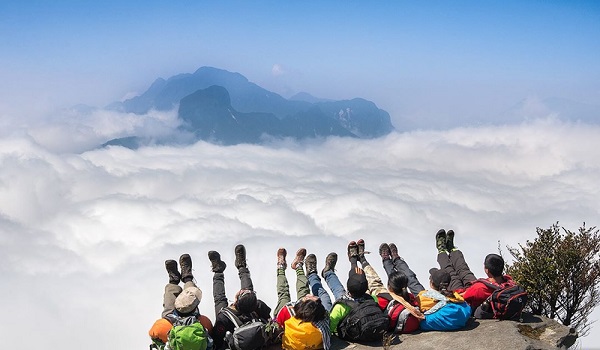
Tip: Prepare warm clothes and some heat packs as the campsite is usually cold and windy at night.
5. Take a cable-car up to lofty Fansipan: Too unfit to trek up Fansipan? Fret not! You can still bask in the picturesque Fansipan mountain with a ride up the Sunworld Fansipan Legend Cable Car. The ride guarantees enthralling sceneries of Muong Hoa Valley and the Hoang Lien Son Mountain range. Fun Fact: The Sunworld Fansipan Legend cable car has been recognised by the Guinness World Records Organisation as the longest non-stop three-rope cable car.

Ticket Prices: 700,000 VND (~US$41) per ticket for adults, 500,000 VND (~US$30) per ticket for children. It is definitely worth every dong to get the Sapa Cable Car experience to Pansipan Peak!
6. Bask in the green rice terraces of Muong Hoa Valley: No trip to Sapa is complete without treading on the bright green rice terraces – a manifestation of the livelihood of the Sapa hill tribes who are heavily dependent on rice cultivation. If mountain treks are over-taxing and arduous for you, then a trek along the rice terraces of Muong Hoa Valley is perfect!
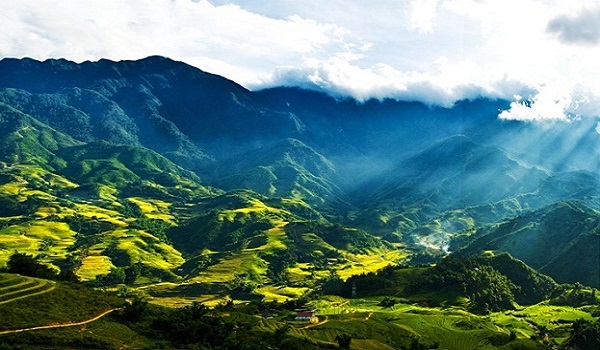
7. Enjoy a traditional experience at Cat Cat Village: The trekking never ends in Sapa, doesn’t it? Well, another alternative to the onerous mountain hikes would be a visit to the Cat Cat Village. While you are likely to experience a very long walk with numerous steps, it is certainly less strenuous.
The Hmong village people are friendly and albeit the many assertions of over-commercialisation in the area, the Cat Cat Village is still a nice spot to take touristy photos at the water wheels and watch some local performances.

Tip: The way back from the village to Sapa is a steep climb so if you do not fancy the walk, you can get a motorbike ride for 20,000VND (~S$1).
8. Traditional Hmong-style cuisine: Time to replenish your energy! You can enjoy traditional Hmong-style cuisine at The Hill Station Signature Restaurant, renowned for its spring rolls, tofu, traditional Hmong pork confit, smoked buffalo and black pudding. Unwind with some house wine and craft beer if you’d like! The price is extremely reasonable and excellent service is provided. This restaurant is also perfect for vegetarians.
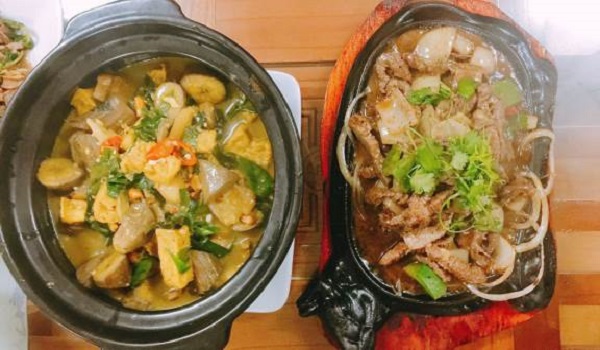
9. Holy Rosary Church of Sapa: Tired of traipsing around nature hikes? A visit to the Holy Rosary Church of Sapa requires no physical exertion and you get a chance to immerse in remnants of French colonial history after the post Second World War destroyed nearly all the 200 colonial buildings in Sapa.
The church flaunts a rustic exterior and a colonial architectural design that take us back to the French colonial period in Vietnam. It is opened only on the weekends and while you may not get a glimpse of the church’s interior, the beautiful exterior is worth a snap! Furthermore, it is fascinating to observe the activities in town and people-watch at the nearby Quang Truong Square.
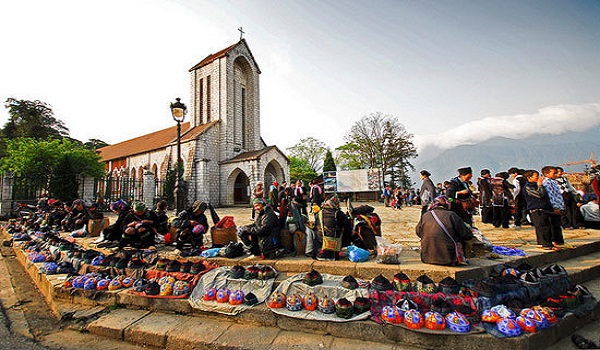
Tip: The church is also beautiful at night with its colourful exterior lighting!
10. Shop at the local Sapa Market: The hustle and bustle of the Sapa market is emblematic of the vibrant lives of the tribal people. It is a mere 20-minute walk from Town Square, so if you’re in the area then drop by to get a glimpse of the frenetic atmosphere and buy some clothing, utensils or handcrafts. Some haggling skills are essential and be sure to stay firm as vendors may get a bit pushy! If you get too tired and hungry, a warm bowl of beef pho at a local stall is certainly consoling.

11. Ham Rong Flower Garden: Calling all anthophiles! Swarmed with bright-coloured flowers in the dewy air and sweet fragrances up your nostrils, the Ham Rong Flower Garden is a worthy visit. If you’re tired of trudging uneven grounds – not to worry – the garden is nicely paved and stairs are provided. This place is family-friendly and the entrance fees of 70,000 VND (~S$4) for adults and 20,000 VND (~S$1) for children are reasonable.
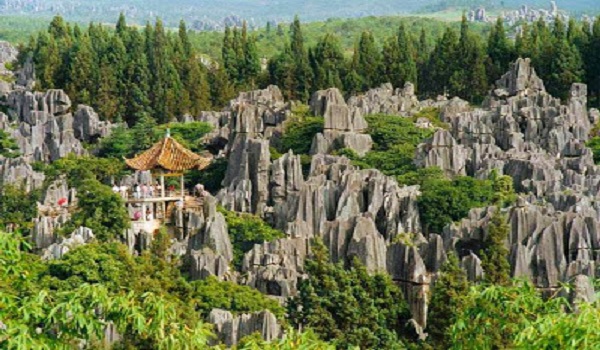
The entire path will take about three to five hours to complete and you can enjoy a free traditional performance right up the mountain for 30 minutes. The steps may be a bit steep but it is a relatively easy climb. Not to forget, the top overlooks the Sapa Town and Sapa Lake. If you happen to visit Sapa Town or the church, then make a visit to the Ham Rong Flower Garden which is within the vicinity!
12. Explore Sapa’s history and culture at Sapa Museum: If you’re looking for a more formal historical perspective on Sapa and its inhabitants, head down to the Sapa Museum! The museum offers an informative visual introduction to the different ethnic groups in Sapa and the distinctive features of their cultures, as well as the history of the French occupation and town development.
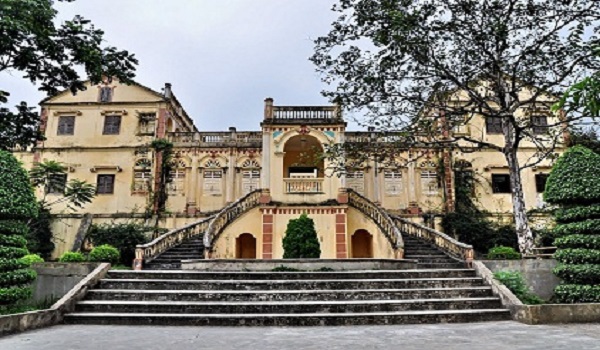
The museum is also near the church and is a handy option during bad weather. There is a shop on the ground floor of the museum, so if you’re looking to buy some handicrafts, embroideries or clothes for your loved ones back at home, there’s a vast array of options!
13. Sapa Night and Love Markets: Love and market? How contradictory! But that’s where the demand and supply of prospective partners and relationships interplay. The Love Market is a distinct practice of the Mong and Dao ethnic groups. The distance between both villages do not allow for frequent interaction (and dating opportunities), thus the Love Market provides a space for people from both ethnic groups to meet one another.
The ladies will don their colourful dresses and decorative ornaments, whereas the gents dress in traditional costumes. The Love Market only occurs on a Saturday where they interact, sing and play games with one another. Don’t worry about being the third wheel and immerse yourself in a long-standing tradition of the Mong and Dao ethnic groups!
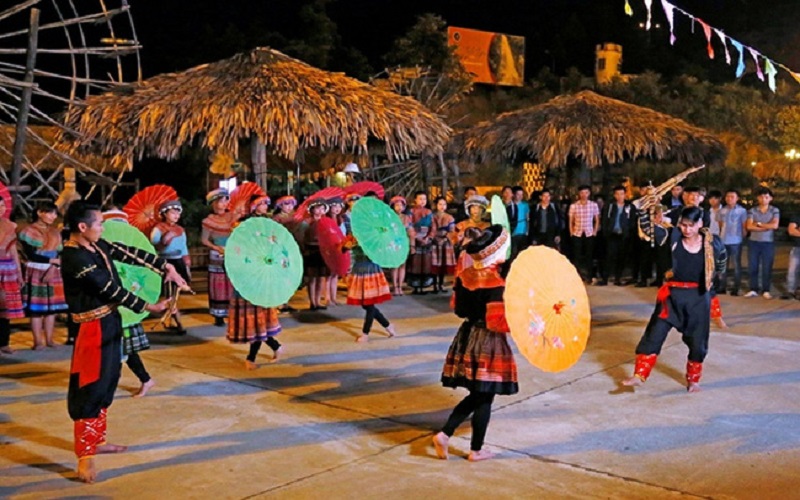
If you have been contemplating to go on a trip to Sapa, Vietnam, then wait no more! With the abovementioned 16 things to do in Sapa, you can kickstart your itinerary planning and pack your bags. With its diverse hill tribe cultures and an abundance of nature, the trip to Sapa will certainly be mind-altering and an adventure of a lifetime.
14. Bac Ha Sunday Market: Once a week, the Hmong are joined by families and traders from other ethnic minority communities for the Bac Ha Market, a colourful display of local culture, colour and commerce.

The Bac Ha Market, which takes place every Sunday, is one of the biggest and busiest markets in the region. It’s a a treat for the sense in every sense of the phrase, and a highlight of visiting Northern Vietnam.
15. Sapa Glass Bridge: Rong May glass bridge (also known as Sa Pa Glass Bridge, O Quy Ho glass bridge) is an elevated pedestrian bridge located within the Rong May glass bridge tourist area located on O Quy Ho pass in Son commune. Binh, Tam Duong district, Lai Chau province, Vietnam.
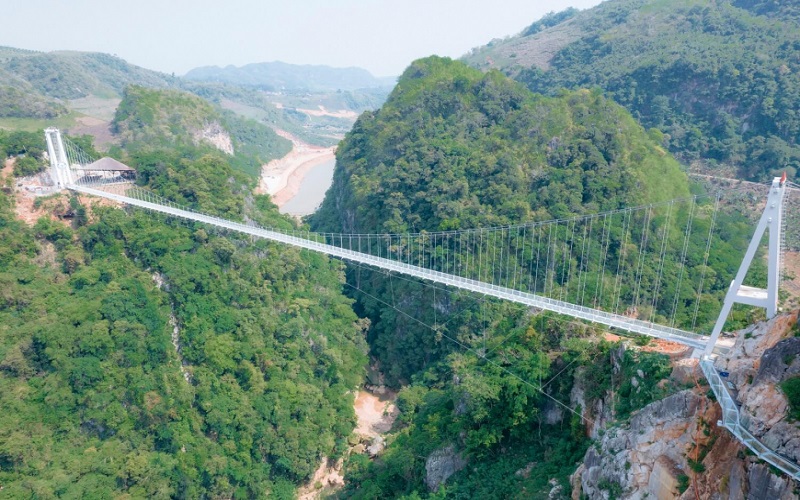
This is part of the overall project with a total investment of 1,000 billion VND, starting construction in 2017 and inaugurated at the end of 2019. Rong May is the second glass bridge in Vietnam and the highest glass bridge in Vietnam. at the time of inauguration.
16. Sapa Heaven Gate: Also known as O Quy Ho Heaven Gate, and is a new tourist destination invested in construction and completed in 2019 to welcome tourists to admire the scenery of the Northwest mountains and forests.

Located only about 18km from Sapa tourist center, on National Highway 4D from Lao Cai to Lai Chau. The road up to Sapa Gate has winding slopes halfway up the mountain with endless clouds. The natural mountain scenery becomes increasingly narrow in sight when tourists conquer one of these "four great passes".
17. Having Traditional Medicine Massage: A long-standing tradition has been preserved until now and medicinal plants have entered the subconscious of the Dao people, becoming an irreplaceable means of health care when someone in the family is sick or tired.
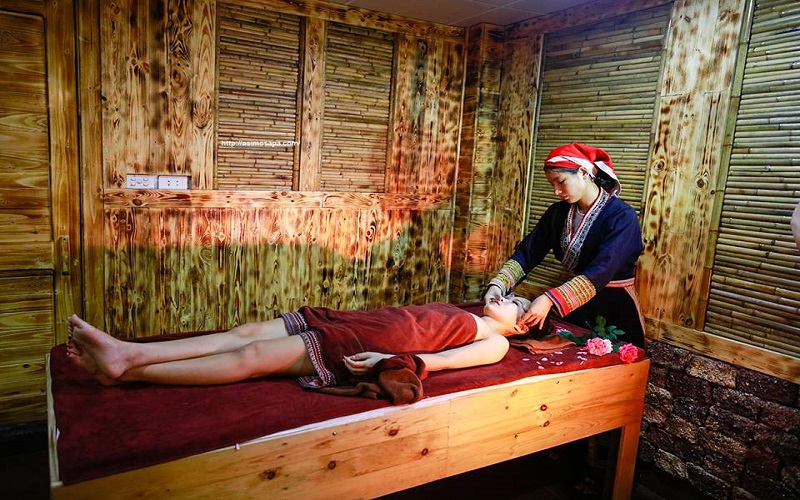
Some of the plants in the bath remedy are grown in the home garden for ease of use. Bath medicine of the Dao people is a typical form of using herbs as medicine for health care and treatment that has existed since ancient times. The number of medicinal plants in a bath remedy is usually very large, ranging from 10 to 120 species, belonging to many different plant families and life forms.
Best of Vietnam

Best Vietnamese Food You Have to Try in Vietnam
Best Food in Vietnam: Vietnamese Traditional Food is top World well known to be both healthy and...
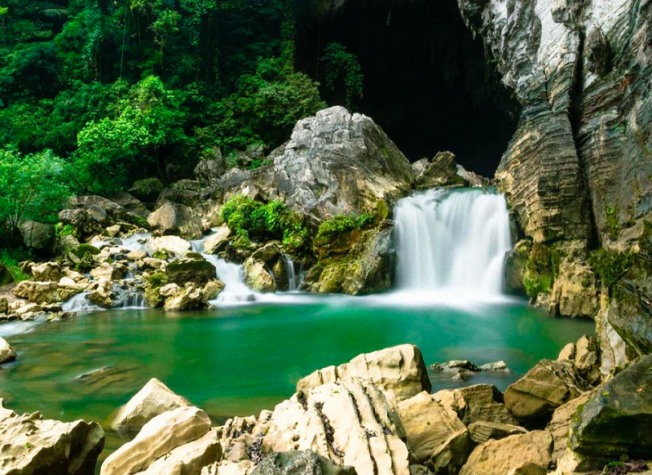
10 Best National Parks in Vietnam
Vietnam Travel Guide: If you look for the Best Wildlife Discovery Experience in Vietnam, here are...
Read More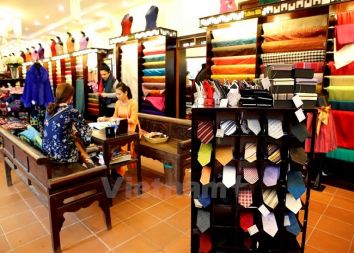
Best Souvenir to Buy in Vietnam
If you look for Best Things to Buy when traveling to Vietnam to bring home for your family & friends...
Read More
The 10 Best Places to Visit in Vietnam
Vietnam Travel Guide: Home to an extensive collection of historical and cultural attractions,...
Read More
Top 10 Museums You Should Not Miss in Vietnam
Vietnam, 4.000 years old country has a unique and lengthy history, culture with 54 ethnic groups. It...
Read MoreFind your trip
Vietnam Best Tours
Vietnam Car Rental
Vietnam Travel Blog
- Vietnamese People: Origin, History, Culture and Traditions
- Vietnam Currency: Best ATM and Places to Exchange Money
- Vietnam Map: Regions, Cities & Provinces Map of Vietnam
- What is illegal Things in Vietnam: Rules & Laws for Tourists
- Best Time to Travel to Vietnam to Avoid the Bad Weather
- Vietnam News: Population & Religions of 54 Ethnic Groups









